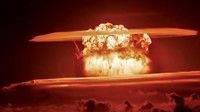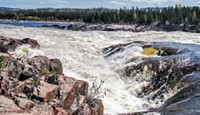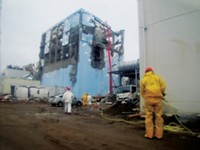Advertisement
Grab your lab coat. Let's get started
Welcome!
Welcome!
Create an account below to get 6 C&EN articles per month, receive newsletters and more - all free.
It seems this is your first time logging in online. Please enter the following information to continue.
As an ACS member you automatically get access to this site. All we need is few more details to create your reading experience.
Not you? Sign in with a different account.
Not you? Sign in with a different account.
ERROR 1
ERROR 1
ERROR 2
ERROR 2
ERROR 2
ERROR 2
ERROR 2
Password and Confirm password must match.
If you have an ACS member number, please enter it here so we can link this account to your membership. (optional)
ERROR 2
ACS values your privacy. By submitting your information, you are gaining access to C&EN and subscribing to our weekly newsletter. We use the information you provide to make your reading experience better, and we will never sell your data to third party members.
Environment
Wildlife Did Not Receive Dangerous Doses Of Radiation From Fukushima
Environment: Researchers estimate that radiation exposure from the 2011 nuclear disaster mostly remained below harmful levels for organisms
by Puneet Kollipara
February 25, 2014

Radiation released from the Fukushima nuclear disaster probably caused little long-term harm to Japan’s wildlife, a new study suggests. A team of scientists modeled radiation exposure caused by the crippled nuclear plant and found that the doses weren’t high enough to prevent most organisms from reproducing and surviving (Environ. Sci. Technol. Lett. 2014, DOI: 10.1021/ez500019j).
“This is a very important paper,” because it convincingly challenges previous work that suggested more serious effects from Fukushima’s radiation releases, says Kathryn A. Higley, a radioecologist at Oregon State University. One study reported a link between elevated radiation levels to abnormalities in butterflies (Sci. Rep. 2012, DOI: 10.1038/srep00570). But the new study uses more accurate methods to estimate organisms’ radiation doses, which has allowed for a better assessment of whether the radiation caused harm, says Higley, who wasn’t involved in either work.
In March 2011, an earthquake-triggered tsunami damaged the Fukushima Daiichi Nuclear Power Station in Japan, causing three of its reactors to melt down. As a result, the reactors spewed out radioactive nuclides such as iodine-131, with a half-life of eight days, and cesium-137, with a half-life of 30 years. The disaster renewed public skepticism of nuclear power and concern about the technology’s potential risks to wildlife and human health.
Since the start of the incident, scientists have tried to estimate risks to wildlife populations caused by radiation exposure. In particular, they’ve investigated whether radiation exposure reached levels that might hurt the ability of a large group of organisms to reproduce and thus survive.
But it’s not easy to measure organisms’ doses, in part because radiation levels vary from location to location and species to species, depending on a number of factors. Also, previous studies relied on dosimeters that measure only external dosage to wildlife. To properly estimate risks, scientists also need insight into what doses organisms received internally from ingesting radioactive material.
Justin E. Brown of the Norwegian Radiation Protection Authority and his colleagues used different methods to estimate the Fukushima-related doses. First, the team compiled thousands of measurements of post-meltdown radionuclide concentrations collected throughout the first year after the accident, in and near the Fukushima prefecture. They looked at concentrations in the environment and in organisms that the United Nations has designated as representative of biodiversity, including deer, grass, and macroalgae. The data came from previous studies and monitoring stations that were set up after the disaster by the United Nations Scientific Committee on the Effects of Atomic Radiation. The researchers entered all of this data into a model to estimate organisms’ external and internal doses.
Brown and his colleagues compared the estimated total doses to established benchmarks for harmful radiation exposure in wildlife. In the short term, some individuals in a population may have received levels that exceeded the benchmarks, the researchers found. But radiation levels fell off within a few months, and within a year, total doses fell below benchmarks for all organisms but macroalgae. The cumulative dose for algae within 50 m of the plant over the first year exceeded the organisms’ benchmark by nearly 50%, Brown says.
This study helps researchers estimate the range of doses different organisms received after Fukushima, says Deborah H. Oughton, a radioecologist at the Norwegian University of Life Sciences. But researchers still need to do comprehensive field studies to tease out how radiation and other stressors, such as the tsunami itself or radiation-decontamination efforts, affected wildlife, she adds.





Join the conversation
Contact the reporter
Submit a Letter to the Editor for publication
Engage with us on Twitter